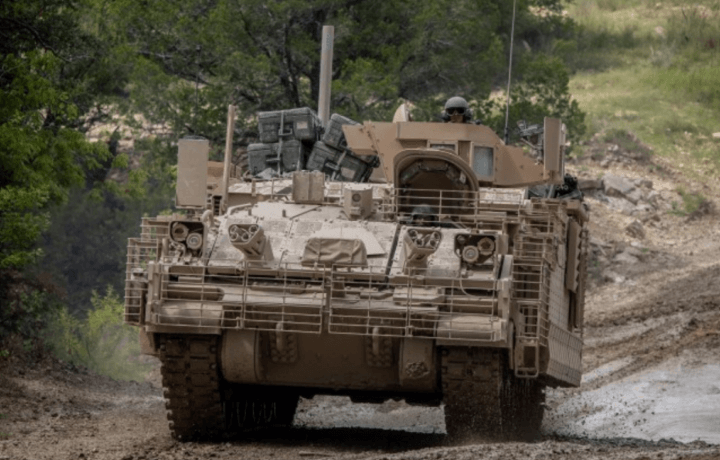According to BAE Systems, the very first production Armored Multi-Purpose Vehicle (AMPV) rolled off the assembly line and is ready to roll out for delivery to the U.S. Army. It was designed to replace the Army’s M113 armored personnel carriers (APC), which first entered service 60 years ago and was used throughout the Vietnam War.
The first AMPV was handed over in a virtual “roll-off” ceremony at the BEA production line in York, PA.
“Finalizing the first AMPV for delivery marks a major milestone for the program and the U.S. Army,” Bill Sheehy, AMPV program director for BAE Systems’ Ground Vehicles product line, said in a statement. “The AMPV is designed to meet the Army’s missions for the Armored Brigade Combat Teams (ABCT), and lay the foundation for the future of the battlefield.”
Reduced Delivery
The delivery of the first AMPV was delayed due to the coronavirus pandemic.
The program entered low-rate initial production (LRIP) in January 2019, and according to the Army’s fiscal year 2021 (FY21) budget request the service will receive 32 of the new vehicles – down from the planned 143 as the budget was cut from $445 million to $193 million DefenseNew reported. The current LRIP contract, which was originally awarded in 2018, is for more than 450 vehicles.
Safety and Survivability
The program had been described as central to the Army’s modernization objectives, especially as the efforts to replace the M2 Bradley Fighting Vehicle via the Optionally Manned Fighting Vehicle (OMFV) program has remained stalled.
The Army has identified safety and survivability to be a top priority, and the AMPV will provide the service with a highly survivable and mobile fleet of vehicles that improves upon the Vietnam War-era M113 while providing greatly maneuverability for the ABCT in challenging terrain on the front lines.
Mobile Command Center
A total of five variants of the AMPV are being developed, including a Mission Command vehicle, which was the first vehicle delivered to the military. It is already the cornerstone of the Army’s ABCT Network Modernization Strategy. It will facilitate a digital mission command center that is mobile while it can still take advantage of increased volume, protection, power, and cooling capabilities that are required with today’s advanced communications devices.
The Mission Command AMPV will further provide greater flexibility and growth capacity for command, control, communications, and computer capabilities. It could be used not only as a command center, but it could also be used to control autonomous drones and other networked devices while keeping operators mobile and safe from enemy fire.
The AMPV also offers built-in growth to add new capabilities as technology evolves, and this could include enhanced power generation for advanced electronics and network connectivity. This could also provide the Army with a vehicle to execute today’s missions, with the ability to adapt to future technologies and capabilities.
A Family of AMPVs
Unlike the older M113, the new AMPV will provide greater flexibility as four additional variants will be produced. These will include:
- General Purpose vehicle – which could operate throughout the battle space to conduct resupply, maintenance, and alternate casualty evacuation from point of injury.
- Mortar Carrier – a variant that could provide immediate, and responsive, heavy mortar fire support to the ABCT in the conduct of fast-paced offensive operations.
- Medical Evacuation vehicle – a version that could enable immediate treatment or evacuation at the point of injury to either ambulatory or litter casualties.
- Medical Treatment vehicle – would be the first of its kind, serving as an ‘operating room on tracks’ for life-sustaining care to soldiers suffering from life-threatening injuries.
“The AMPV family of vehicles provides significant power, mobility, interoperability, and survivability improvements for the ABCT,” added Jeremy Tondreault, vice president and general manager of BAE Systems’ Combat Mission Systems. “The AMPV has demonstrated outstanding survivability and force protection as well as flexibility and growth for the future.”
BAE Systems Set to Deliver Another 450
The platform has already completed nearly two dozen Army tests, and the AMPV has consistently met or exceeded all of its requirements. Under the current low rate initial production contract awarded in 2018, BAE Systems will deliver more than 450 of the highly mobile, survivable, multi-purpose vehicles. Work on the AMPV program is taking place across BAE Systems’ industrial network, which includes facilities in Aiken, SC, Anniston, AL, Phoenix, AZ, Sterling Heights, MI, and York, PA.




